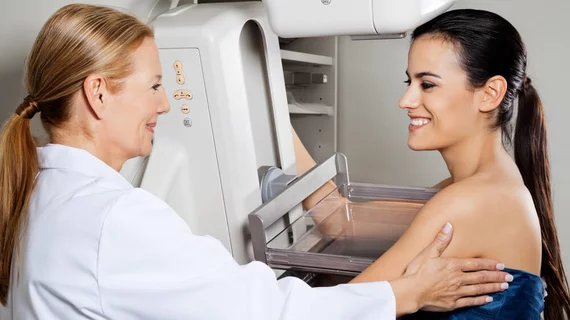Self-scheduled mammograms gaining popularity with younger patients
More and more patients are starting to schedule their own screening mammograms through online portals, according to a new published in the Journal of the American College of Radiology.[1] Younger patients appear to be embracing this opportunity the most.
The American College of Radiology recommends annual screening mammograms for average-risk women starting at the age of 40. Importantly, patients do not require referrals or orders from providers for these screenings, making them an ideal candidate for self-scheduling.
“Self-scheduling allows patients to book appointments at any time from anywhere. This added convenience can improve patient satisfaction and can be particularly useful for patients with busy schedules,” wrote lead author Emily B. Ambinder, MD, an assistant professor of radiology and radiological science with Johns Hopkins Medicine, and colleagues. “Patients can also select the appointment time that is most convenient for them. Self-scheduling also puts patients in control of their own healthcare and encourages greater patient engagement.”
The study covered data from nearly 75,000 unique patients treated at a multisite academic institution from 2015 to 2022. This covered more than 250,000 different screening mammograms. The average patient age was 59 years old. Overall, 36,200 (14.5%) of mammograms were self-scheduled via an online portal, with that total gradually ramping up over time from 3.7% of patients in 2015 to 36.9% in 2022. The most significant uptick occurred between 2019 and 2022, coinciding with the COVID-19 pandemic.
Younger age groups, specifically those under 50, were more inclined to self-schedule, with a 5.4-fold higher likelihood compared to patients over 70 years old. Beyond that, non-Black patients exhibited a higher preference for online self-scheduling, as did those who speak English. Income and location also played a factor, with patients residing in disadvantaged zip codes showing a greater tendency to schedule appointments in a more traditional way.
The researchers say that the trend toward adoption by younger patients was consistent with the work of other researchers.
“Previous studies have found that younger patients are more likely to self-schedule screening mammograms, consistent with our findings,” the authors wrote. “This may be due to higher comfort levels with technology and increased demand for convenience among younger patients.”
Another significant finding of the study was the remarkably low cancel/no-show rates, highlighting the effectiveness of self-scheduling, which in turn improves the efficiency of business operations for health systems. Patients who opted for telephone scheduling were more likely to cancel or not show up for their appointments, but the authors were hesitant to speculate as to why:
“This may be due to different patient populations and/or different online portal systems. Further research is needed to better understand factors that influence cancellation/no-show rates,” they wrote.
Overall, the study's results suggest that self-scheduling for screening mammography is gaining popularity, driven by the convenience it offers to patients. As healthcare systems continue to adopt online patient portals, understanding these factors can help tailor strategies to ensure equitable access to the benefits of self-scheduling.

